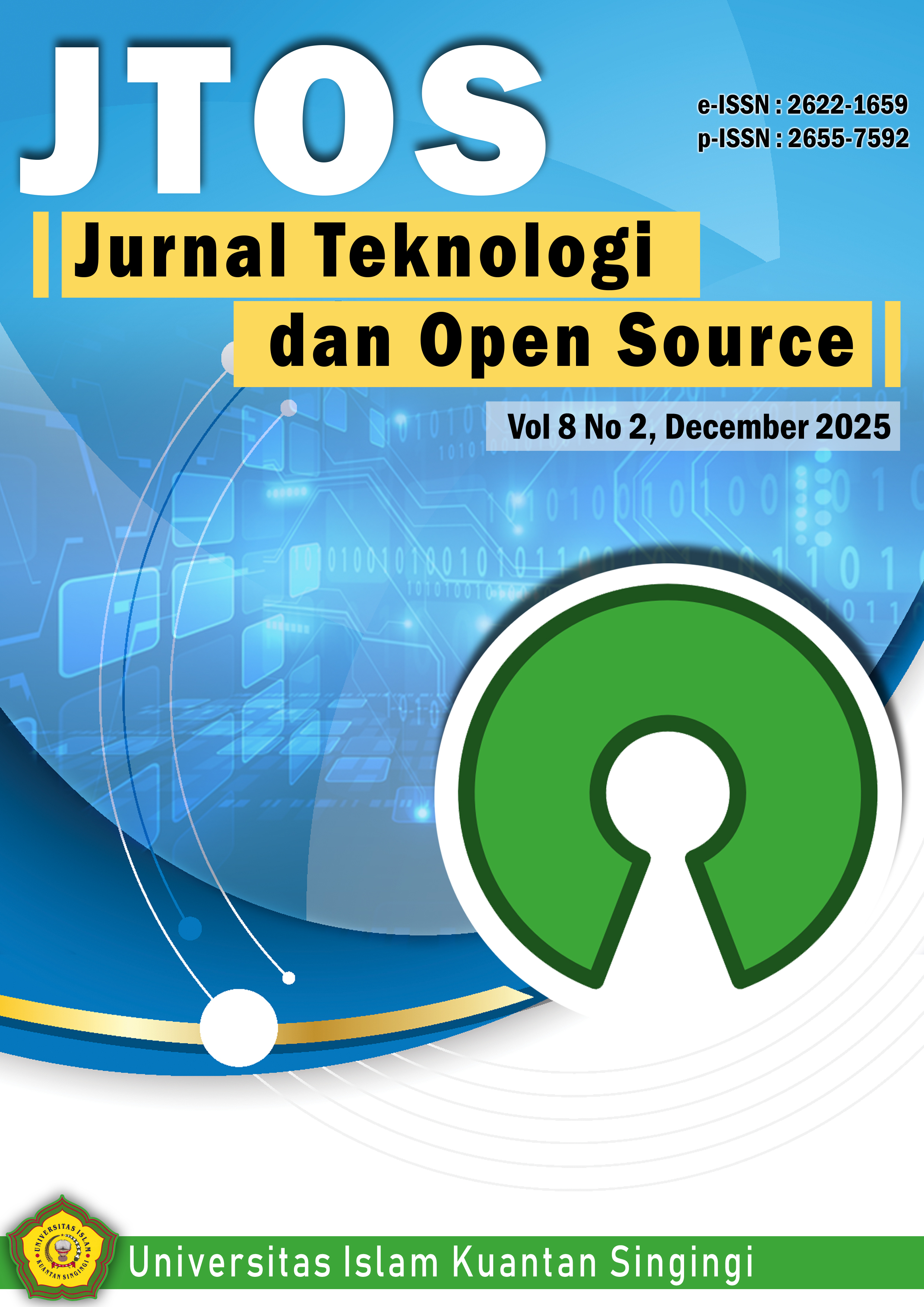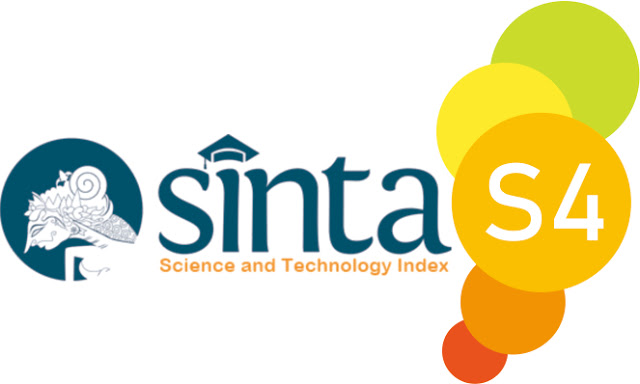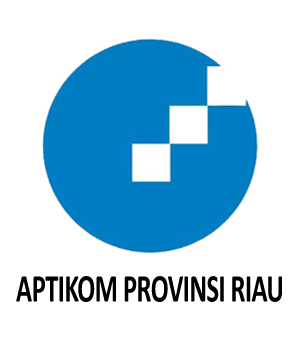Concept And Potential For The Implementation Of Smart Parking System In Indonesia: A Literature Review
Abstract
The rapid development and growth of the Internet of Things (IoT) has improved the quality of life and strengthened various areas of society. Many cities around the world are looking forward to becoming smart. One of the most popular use cases in smart cities is the implementation of smart parking solutions, as it allows people to optimize time, reduce fuel consumption, and carbon dioxide emissions. Smart parking solutions have a defined architecture with specific components (sensors, communication protocols, and software solutions). Although there are only three components that make up a smart parking solution, it is important to mention that each component has many types that can be used in the implementation of this solution. This article identifies the most frequently used types of each component and highlights the usage trends in the established analysis period. This provides a complementary perspective and is a very useful source of information. society can use this information to decide on the selection of the type of component to be used. implementing smart parking solutions. For this purpose, here we review some of the works related to the implementation of smart parking solutions. To achieve this goal, a semi-cyclical adaptation of the Research Methodology action combined with a systematic review was used to select articles related to the research subject. The most relevant of the types of components that should be considered when implementing smart parking solutions. The implementation of smart parking in Indonesia promises many benefits, especially in increasing efficiency and transparency. However, challenges such as high costs, infrastructure readiness, and technological literacy must be overcome so that this system can run optimally and inclusively.
Downloads
References
J. J. Barriga et al., “Smart parking: A literature review from the technological perspective,” Appl. Sci., vol. 9, no. 21, 2019, doi: 10.3390/app9214569.
C. M. d. Morais, D. Sadok, dan J. Kelner, “An IoT sensor and scenario survey for data researchers,” J. Brazilian Comput. Soc., vol. 25, no. 1, 2019, doi: 10.1186/s13173-019-0085-7.
T. Lin et al., “A Survey of Smart Parking Solutions To cite this version : HAL Id : hal-01501556,” IEEE Trans. Intell. Trasp. Syst., vol. 18, no. 12, hal. 3229–3253, 2017.
I. Irawati, F. Y. Roi, T. Y. Agung, and M. Lutfi, "Tracking Devices Based on Long Range Wide Area Network (Lorawan)," Jeis J. Elektro and Inform. Swadharma, vol. 2, no. 2, p. 44–48, 2022, doi: 10.56486/jeis.vol2no2.222.
I. Aydin, M. Karakose, dan E. Karakose, “A navigation and reservation based smart parking platform using genetic optimization for smart cities,” ICSG 2017 - 5th Int. Istanbul Smart Grids Cities Congr. Fair, hal. 120–124, 2017, doi: 10.1109/SGCF.2017.7947615.
N. Cahyadi, P. Dorand, N. R. F. Rozi, L. A. Haq, dan R. I. Maulana, “A Literature Review for Understanding the Development of Smart Parking Systems,” J. Informatics Commun. Technol., vol. 5, no. 1, hal. 46–56, 2023, doi: 10.52661/j_ict.v5i1.196.
Y. Geng dan C. G. Cassandras, “A new ‘Smart Parking’ System Infrastructure and Implementation,” Procedia - Soc. Behav. Sci., vol. 54, no. may 1877, hal. 1278–1287, 2012, doi: 10.1016/j.sbspro.2012.09.842.
K. C. Lan dan W. Y. Shih, “An intelligent driver location system for smart parking,” Expert Syst. Appl., vol. 41, no. 5, hal. 2443–2456, 2014, doi: 10.1016/j.eswa.2013.09.044.
M. Khalid et al., “Towards autonomy: Cost-effective scheduling for long-range autonomous valet parking (LAVP),” IEEE Wirel. Commun. Netw. Conf. WCNC, vol. 2018-April, no. April, hal. 1–6, 2018, doi: 10.1109/WCNC.2018.8377313.
D. Thomas dan B. C. Kovoor, “A Genetic Algorithm Approach to Autonomous Smart Vehicle Parking system,” Procedia Comput. Sci., vol. 125, hal. 68–76, 2018, doi: 10.1016/j.procs.2017.12.011.
W. S. Wasana, R. D. Adityo, dan W. Herulambang, “Implementation of Intelligent Parking System Using IoT-Based Devices (case Study of Galaxy Mall Surabaya),” JEECS (Journal Electr. Eng. Comput. Sci., vol. 6, no. 2, hal. 1135–1158, 2021, doi: 10.54732/jeecs.v6i2.207.
A. N. M. Nasution, R. Munadi, dan S. Sussi, “Design and Implementation of Smart Parking System Using Location-Based Service and Gamification Based On Internet Of Things,” J. Infotel, vol. 13, no. 2, hal. 63–75, 2021, doi: 10.20895/infotel.v13i2.654.
E. Thiébaud (-Müller), L. M. Hilty, M. Schluep, R. Widmer, dan M. Faulstich, “Service Lifetime, Storage Time, and Disposal Pathways of Electronic Equipment: A Swiss Case Study,” J. Ind. Ecol., vol. 22, no. 1, hal. 196–208, 2018, doi: 10.1111/jiec.12551.
D. Sahu, P. Sinha, S. Prakash, T. Yang, R. S. Rathore, dan L. Wang, “A multi objective optimization framework for smart parking using digital twin pareto front MDP and PSO for smart cities,” Sci. Rep., vol. 15, no. 1, hal. 1–26, 2025, doi: 10.1038/s41598-025-91565-0.
M. Jemmali, L. K. B. Melhim, M. T. Alharbi, A. Bajahzar, dan M. N. Omri, “Smart-parking management algorithms in smart city,” Sci. Rep., vol. 12, no. 1, hal. 1–15, 2022, doi: 10.1038/s41598-022-10076-4.
É. Garrabé dan G. Russo, “CRAWLING: a crowdsourcing algorithm on wheels for smart parking,” Sci. Rep., vol. 13, no. 1, hal. 1–17, 2023, doi: 10.1038/s41598-023-41254-7.
M. Alam et al., “Real-Time Smart Parking Systems Integration in Distributed ITS for Smart Cities,” J. Adv. Transp., vol. 2018, 2018, doi: 10.1155/2018/1485652.
L. Baroffio, L. Bondi, M. Cesana, A. E. Redondi, dan M. Tagliasacchi, “A visual sensor network for parking lot occupancy detection in Smart Cities,” IEEE World Forum Internet Things, WF-IoT 2015 - Proc., hal. 745–750, 2015, doi: 10.1109/WF-IoT.2015.7389147.
G. Madzonga, “Outdoor Smart Parking Management System,” no. October, 2014.
Lam dan Yang, “Application of Technology to Car Parking Facilities in Asian Smart Cities,” hal. 1–27, 2019.
H. Isakovic et al., “CPS / IoT Ecosystem : A platform for research and education,” hal. 1–8, 2019.
A. AlHarbi, B. AlOtaibi, M. Baatya, Z. Jastania, dan M. Meccawy, “A Smart Parking Solution for Jeddah City,” Int. J. Comput. Appl., vol. 171, no. 7, hal. 4–9, 2017, doi: 10.5120/ijca2017915084.
S. E. Shih dan W. H. Tsai, “A convenient vision-based system for automatic detection of parking spaces in indoor parking lots using wide-angle cameras,” IEEE Trans. Veh. Technol., vol. 63, no. 6, hal. 2521–2532, 2014, doi: 10.1109/TVT.2013.2297331.
T. Lin, H. Rivano, dan F. Le Mouël, “Performance comparison of contention- and schedule-based MAC protocols in urban parking sensor networks,” WiMobCity 2014 - Proc. 2014 ACM Int. Work. Wirel. Mob. Technol. Smart Cities, co-located with MobiHoc 2014, hal. 39–47, 2014, doi: 10.1145/2633661.2633663.
A. Bagula, L. Castelli, dan M. Zennaro, “On the design of smart parking networks in the smart cities: An optimal sensor placement model,” Sensors (Switzerland), vol. 15, no. 7, hal. 15443–15467, 2015, doi: 10.3390/s150715443.
A. Javaheri et al., “Evaluating Impact of Smart Parking Systems on Parking Violations,” IEEE Access, vol. 12, no. November, hal. 175585–175596, 2024, doi: 10.1109/ACCESS.2024.3503513.
A. I. Niculescu et al., “Designing IDA - An intelligent driver assistant for Smart city parking in Singapore,” Lect. Notes Comput. Sci. (including Subser. Lect. Notes Artif. Intell. Lect. Notes Bioinformatics), vol. 9299, hal. 510–513, 2015, doi: 10.1007/978-3-319-22723-8_50.
A. Alotaibi, A. Almasoudi, dan A. Alqurashi, “Investigation of the impact of smart mobility solutions on urban transportation efficiency in Saudi Arabian Cities,” J. Umm Al-Qura Univ. Eng. Archit., vol. 16, no. 2, hal. 379–394, 2025, doi: 10.1007/s43995-025-00114-3.
L. Z. Qi, D. T. K. Tien, dan S. King Phang, “Integrated smart public parking system for Malaysia,” J. Phys. Conf. Ser., vol. 2523, no. 1, hal. 0–14, 2023, doi: 10.1088/1742-6596/2523/1/012040.
B. G. Mesfin, Z. Li, D. Sun, D. Chen, dan Y. Xi, “Urban traffic-parking system dynamics model with macroscopic properties: a comparative study between Shanghai and Zurich,” Humanit. Soc. Sci. Commun., vol. 11, no. 1, hal. 1–13, 2024, doi: 10.1057/s41599-024-02959-w.
S. Zimmermann, T. Schulz, A. Hein, A. F. Kaus, H. Gewald, dan H. Krcmar, “Why Specialized Service Ecosystems Emerge—the Case of Smart Parking in Germany,” Inf. Syst. Front., vol. 27, no. 2, hal. 585–604, 2023, doi: 10.1007/s10796-023-10453-y.
Copyright (c) 2025 Joisce, Hanum Putri Kamelianti, Rizal Aprianto

This work is licensed under a Creative Commons Attribution-ShareAlike 4.0 International License.
This is an open-access article distributed under the terms of the Creative Commons Attribution-ShareAlike 4.0 International License which permits unrestricted use, distribution, and reproduction in any medium. Users are allowed to read, download, copy, distribute, search, or link to full-text articles in this journal without asking by giving appropriate credit, provide a link to the license, and indicate if changes were made. All of the remix, transform, or build upon the material must distribute the contributions under the same license as the original.















